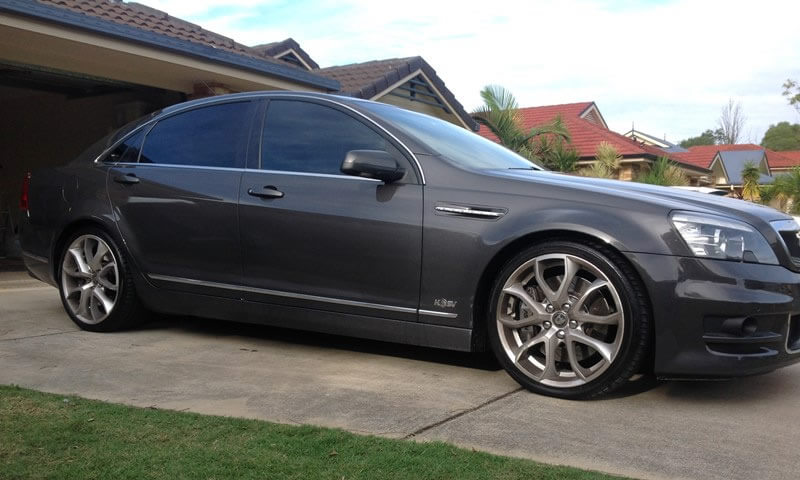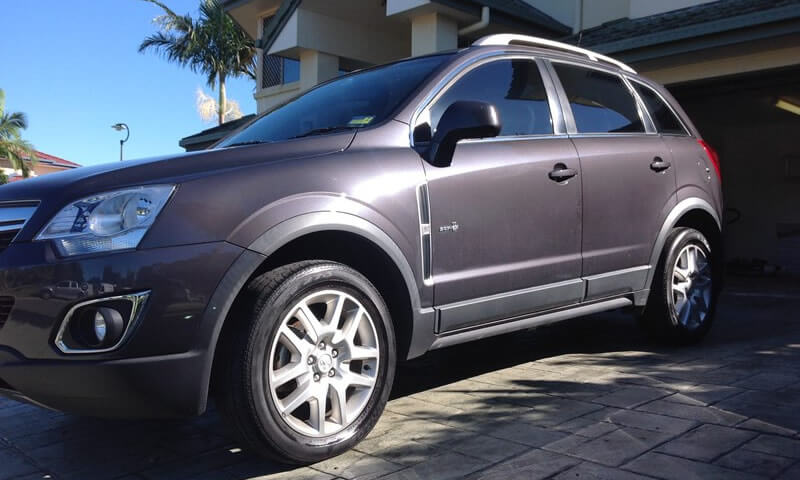Key Must Knows
Cars. Homes. Offices. Since 1998
Quality Statement/Threshold Acceptance Tolerance Guide
Window films are an after-market product and when completed the install will always have some minor imperfections. Once the curing process has taken place you will find occasionally small white points, marks lines in/under the film coating caused by many factors such as contamination, imperfections on the glass, adhesive abnormality, age of vehicle, condition of glass and its frames/rubbers etc. These marks won’t affect the films performance in any way and won’t worsen into larger bubbles or issues. Some window installations require a noticeable border around the edge to ensure proper adhesion particularly on older glass and commercial style applications.
Industry standard is to view your install approximately one metre back from your window and if you can’t see any noticeable imperfections then it is considered an acceptable install. Please keep this in mind when managing your expectations.
When applying window films a lot of water is used in the application process, we go out of our way to cover your vehicles interior however you may notice mild water marks from over spray and run off after your install is completed, this will be minimal and shouldn’t cause any issue and should wipe away with a clean damp cloth with minimal effort.
Removal of existing films can cause more noticeable staining on old trim work etc and roof linings can be damaged when using steamers to remove existing film. Also demister elements and built in transmission elements for radio signal maybe damaged in the removal process.
We highlight these few issues to you our consumer as we want you to be pleased with your purchase and want you to feel comfortable with the process and what to expect. We are not trying to diminish our responsibility of delivering a professional install we just like all parties to have clear understandings of expectations.
We offer an excellent and professional installation coupled with high quality products, our aim is to meet and exceed your expectations. We promise to try our best on every single install and we are certain that you will enjoy the benefits of our product and service for many years to come, however the above mentioned as well as the following key points issues can occur.
Key Issues When Tinting Automotive Glass
Dot Matrix
Most people don’t pay attention to this distinctive border until a piece of film is laid over the top creating a more high-lighted effect, and typically the darker the film the more noticeable the effect will be. The visual change will look like a silvering outline which occurs due the water and air being trapped between the film that has been applied the raised dots.
The annoying part is that regardless of preparation and best practices followed, after installing film this silvering can have different effects from vehicle to vehicle and even on the same glass or car. It’s not uncommon for this silvering to sit up inconsistently despite the installer’s best efforts to create a uniform and consistent result.
Acid Rain
Often this will go unnoticed until a piece of film is laid onto the interior surface of the glass creating a dark background which will in turn create a high-lighted effect of these imperfections. This even occurs on brand new cars.
Don’t worry too much as this can be treated via an acid removal product with no damage either through the purchase of some products from an auto store or most detailers will be aware of this issue and be able to rectify the stains.
Scratches
Hot Spots
Scuff / Rub Marks
Internal Weather Strips
The biggest issue is that over time of normal use of the windows operating up and down the film will become scratched. A solution to this issue is applying an aftermarket felt strip to the vehicles rubber edge, however this isn’t fail proof and additional charges are applied for the installation and unfortunately does not come with any warranty. Over time this after market felt strips adhesive fails from the combination of heat and the up and down motion of the operation of the window which can create a mess and also may damage the tint which to rectify will be additional charges down the track.
The options are:
- Not to apply the felt, and have high likelihood of film scratching
- Apply aftermarket felt and have high likelihood of film being damaged
- Not to apply film at all and be exposed to the damaging effects of the sun
Existing Films and Glues
If it is only what we consider to be a minor left over amount of hidden glues we will just clean this as part of the process at no additional costs, however in the situation where a customer has attempted to remove the films and glues themselves it typically makes it a lot more difficult for the installers to then attempt to prep the glass for the install if it hasn’t been done correctly and thoroughly and additional charges will apply.
In addition once the film has been tampered with it is often the case that small tiny pieces of film and glues are left behind and for the best chance of contamination not to occur with your new install it is best practice that the removal be left to the professionals.
If you do an adequate job of the cleaning process i.e. glass cleaned thoroughly of all existing films and glue to an immaculate level there will be no additional charge.
Demister Bars & Other Vehicle Elements Etc
There are recommended best practices that should be undertaken to remove the existing films and glues to give the best opportunity of a successful outcome without damage such as passively steaming every square inch of films from inside the car as opposed to aggressively scraping each window.
The issues of damage can still occur regardless of how much care and attention is devoted to the removal process. When you engage Class One Window Tinting to carry out a removal of existing film from your vehicle we will have you read and sign an acknowledgement form that you understand that this is the case, and that you accept the risks involved with damage occurring to the bars/elements and that you are willing to proceed with the works without Class One Window Tinting being liable for any damages that may occur.
Windscreen Tinting
A considerable amount of heat is applied to the glass area in the preparation and installation process which can cause thermal stress, this can also occur through heat transmission when the windscreen is exposed to the sun, resulting in cracks occurring in the glass.
The second major issue that can occur is water damage to critical electrical components below your cars dash, as a fair amount of slip solution is required to apply the film to the glass.
If you would like to proceed with a windscreen install it will be an all care no responsibility approach from Class One Window Tinting. We strongly recommend against tinting the front screens of motor vehicles.
Film Curing Process
Happy Class One Customers
Thank you so much for the awesome job you did on my car i absolutely love the look and the driving comfort the tint has added. Friendly and professional service at a great price.”
Dave Carmichael
Maree Burrows
Class One Window Tinting
Satisfaction Guaranteed
Call us today
or
We Now Accept Payment Via






